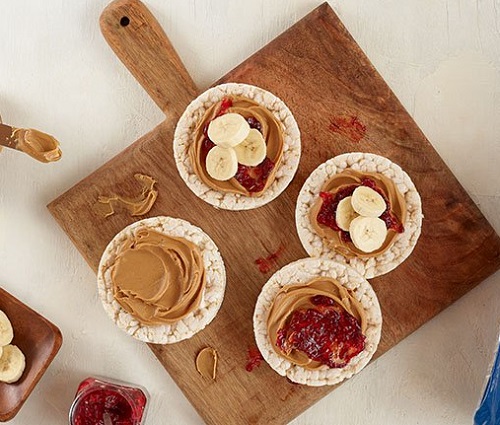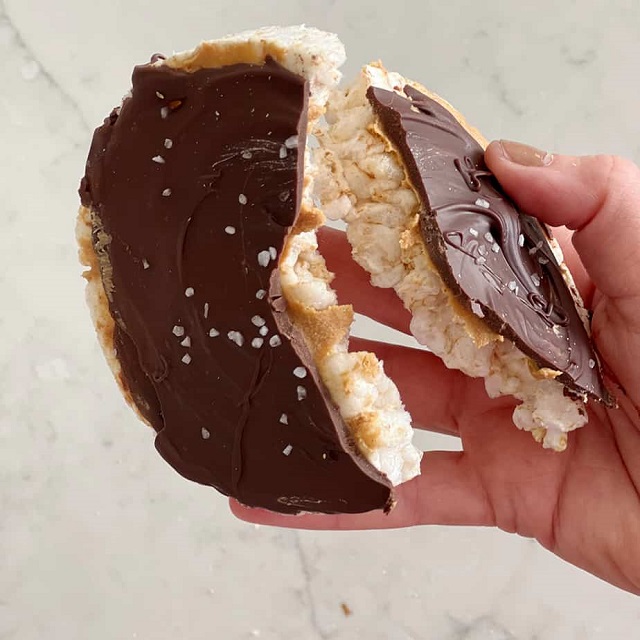If you’re someone who needs to avoid gluten in your diet, it can be tough to find snack options that fit the bill. That’s where rice cakes come in – light, crispy and versatile, they seem like the perfect choice for a gluten-free nosh. But before you start crunching away at them with abandon, let’s delve into the question that’s been on your mind: do rice cakes have gluten?
In this post, we’ll uncover the truth about these popular snacks so you can make an informed decision next time hunger strikes.
Table of Contents
What is gluten?
Gluten is a type of protein found in wheat, rye, and barley. It’s what gives bread its chewy texture and helps cakes and pies rise.
When baking, gluten forms a network that traps air bubbles, making the dough light and fluffy.
People with celiac disease must avoid gluten because it damages the lining of their small intestines and prevents the absorption of nutrients.

Even a small amount of gluten can cause symptoms like abdominal pain, bloating, diarrhea, and fatigue. For people with non-celiac gluten sensitivity, gluten may cause digestive distress or other symptoms.
There is no cure for celiac disease or non-celiac gluten sensitivity, but the good news is that both conditions can be managed by following a strict gluten-free diet.
Do Rice Cakes Have Gluten?
The short answer is no, rice cakes do not have gluten.
However, some brands of rice cakes may be processed in facilities that also process wheat, so if you’re celiac or have a severe gluten allergy, it’s best to check the label to make sure the product is certified gluten-free.
For most people, though, rice cakes are a perfectly safe and healthy snack option. They’re low in calories and fat, and they provide a good source of complex carbohydrates.
So if you’re looking for a quick and easy snack that won’t weigh you down, reach for a rice cake!
How is Gluten Found in Foods?
Gluten is found in all kinds of foods, both those that are specifically made with gluten-containing grain flour and those that aren’t.
It’s even present in some unlikely places, like cosmetics and medications.
This protein is responsible for giving bread its chewy texture and helps keep other baked goods moist. It’s also what gives pizza dough its elasticity.

Gluten is found in wheat, rye, barley, and triticale. These grains are often used to make flour, which is then used in all sorts of recipes.
That means it can be really hard to avoid gluten if you’re trying to eat a gluten-free diet.
How to Know if a Food Contains Gluten
There are a few ways to tell if a food contains gluten.
- First, you can look at the ingredient list. If the food contains wheat, barley, or rye, it contains gluten.
- Second, you can check the allergen information. If the food is labeled “gluten-free,” it does not contain gluten.
- Finally, you can contact the manufacturer to ask about the gluten content of the food.
Read more: How Long Does Cake Last in the Fridge? Tips for Storing and Reheating
Potential Issues with Eating Rice Cakes on a Gluten-Free Diet
There are a few potential issues that could arise from eating rice cakes on a gluten-free diet.
- First, many commercially-available rice cakes are made with glutinous rice, which does contain gluten.
- Second, even if the rice cake is made with non-glutinous rice, it may have come into contact with gluten during processing or packaging.
- Finally, some toppings or flavorings commonly added to rice cakes (such as soy sauce) also contain gluten.
For these reasons, it’s important to check labels carefully and/or contact the manufacturer directly if you have any questions about whether a particular product is safe for your gluten-free diet.
Alternatives to Rice Cakes
If you’re looking for an alternative to rice cakes, there are plenty of options available. Here are a few alternatives to rice cakes that are gluten-free:
- Popcorn – Popcorn is a great alternative to rice cakes because it’s light and airy, and can be flavored however you like. You can either make your own popcorn at home or buy pre-packaged bags of gluten-free popcorn at the store.
- Corn chips – Corn chips are another tasty and crunchy alternative to rice cakes. Look for brands that are marked as gluten-free, and avoid chips that contain wheat or rye flour.
- Rice crackers – Rice crackers are similar to rice cakes in terms of texture and flavor, but they’re usually made with brown rice instead of white rice. Many brands of rice crackers are now becoming available in gluten-free varieties.
- Oatmeal – Oatmeal is a hearty and healthy alternative to rice cakes that’s also very filling. You can either make your own oatmeal at home using gluten-free oats or look for instant oatmeal packets that don’t contain any gluten-containing ingredients.
- Fruit leathers – Fruit leathers make a delicious and chewy alternative to rice cakes that are also packed with nutrients from fruit. You can usually find fruit leathers in the health food aisle of your grocery store, or look for them online.

FAQs
How are rice cakes made?
Rice cakes are made by pressing cooked rice into a cake or muffin shape. They can be flavored with various add-ins like spices or fruit.
What do rice cakes taste like?
Rice cakes have a light and airy texture with a slightly nutty flavor. They can be eaten plain or with toppings like peanut butter or jam.
Are rice cakes healthy?
Rice cakes are a low-calorie and low-fat snack option. They are also a good source of carbohydrates and provide some essential vitamins and minerals.
Conclusion
Rice cakes have been a popular snack for decades, but with the rise of gluten-free diets and allergies, it’s important to know if rice cakes contain gluten. The good news is that most plain rice cakes are naturally gluten-free and can be enjoyed by those following such a diet. However, you should always double-check your labels carefully as some brands may add ingredients that contain gluten.
With this in mind, it’s easy to include rice cakes in any healthy lifestyle!









